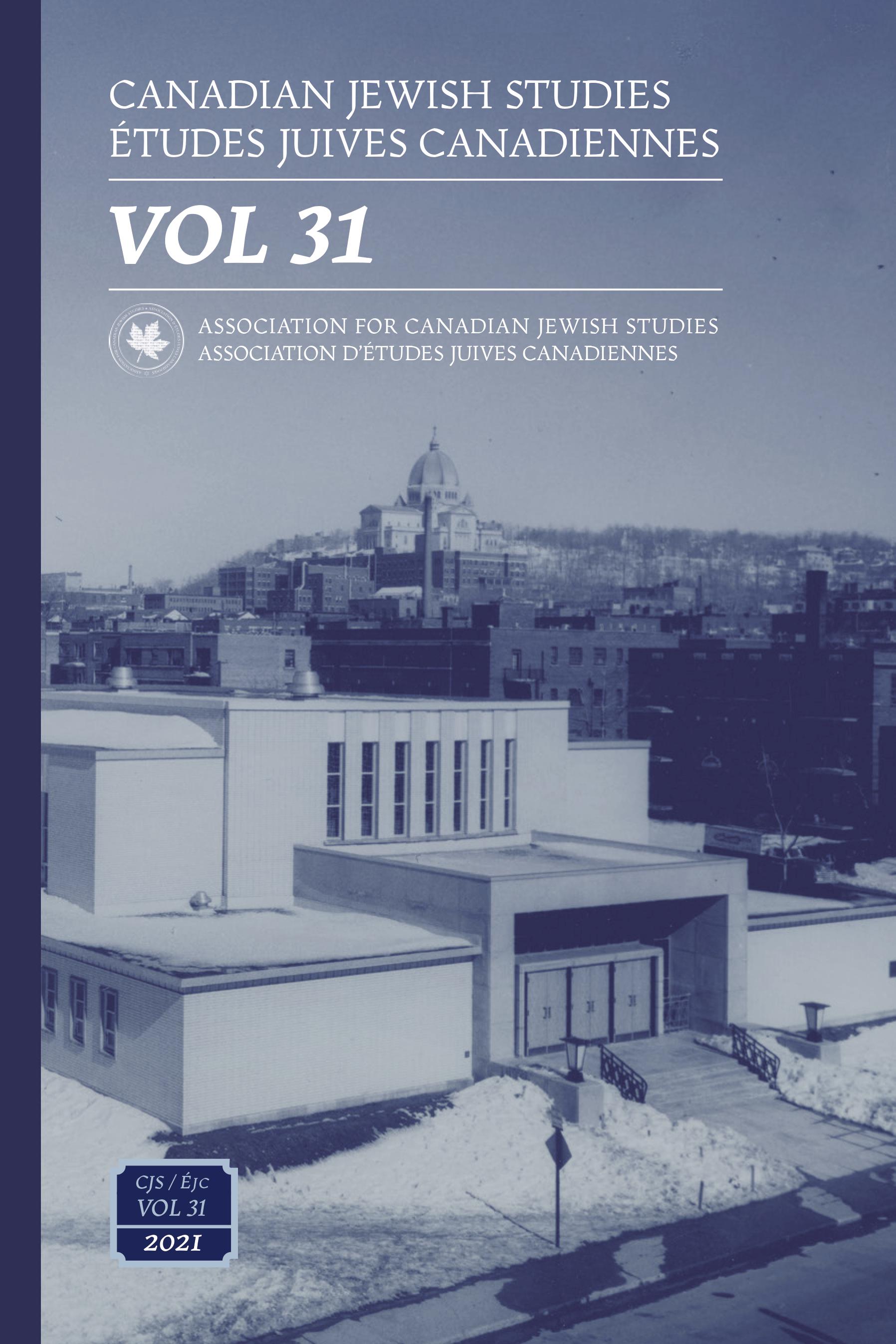Third Solitudes Without Separation, Oneness Torn from the Other: On Tearing Through the Shroud of the Solitude of Montreal Jewish Mystics
DOI :
https://doi.org/10.25071/1916-0925.40213Résumé
How does the Third Solitude of Montreal Mystics engender a tearing of self, at once, away from the other and inscribing within the Canadian landscape? The motif of tearing is used as a comparative lens for investigating the shroud of Third Solitude of two Montreal Jewish Mystics: Leonard Cohen (1934–2016) and the current Tosher rebbe, Rabbi Elimelech Halevi Segal-Loewy, as well as his late father, Rabbi Meshulam Feish Segal-Loewy (1924–2015). This essay analyzes the process of Leonard Cohen tearing away from cultural boundaries of a Westmount cosmopolitan Jewish upbringing, blossoming into a bohemian bard-kohen who returns as a contemplative mystical Jew from Mount Baldy to Israel via Tel Aviv and back to Montreal. By contrast the Tosher rebbe’s tearing away that began in Nyirtass, Hungary is then transplanted in post-Shoah context into the accommodement raisonable of the Plateau Mont-Royal in Montreal eventually exiling to Kiryas Tosh in Boisbriand. The essay explores how the Tosher rebbe radicalizes Third Solitude without separation by tearing away from surrounding Quebecois culture through ascetic strategies, while Cohen tears away from rampant assimilation and spiritual apathy of his Montreal Jewish upbringing. Both mystics wander through the archetypal Northern landscape of Montreal that has become mythologized in these unique moments of tearing through the metaphysical shroud of Third Solitude.
Comment la troisième solitude des mystiques montréalais engendre-t-elle un déchirement de soi, à la fois loin de l’autre et s’inscrivant dans le paysage canadien ? Le motif de la déchirure est utilisé comme une lentille comparative pour enquêter sur le principe de la troisième solitude chez deux mystiques juifs de Montréal : Leonard Cohen (1934-2016) et l’actuel rebbe Tosher, le rabbin Elimelech Halevi Segal-Loewy, ainsi que son défunt père, Rabbi Meshulam Feish Segal-Loewy (1924-2015). Cet article analyse d’abord le cheminement de Leonard Cohen, arraché aux frontières culturelles d’une éducation juive dans un Westmount cosmopolite, fleurissant en un barde-kohen bohémien qui revient à Montréal en tant que mystique juif contemplatif, après avoir transité par le Mont Baldy et Tel Aviv en Israel. L’arrachement du rebbe Tosher, pour sa part, a commencé à Nyirtass, en Hongrie, puis s’est transplanté après la Shoah dans le contexte entourant « l’accommodement raisonnable » du Plateau Mont-Royal à Montréal avant de s’exiler à Kiryas Tosh à Boisbriand. L’essai explore comment le rebbe Tosher radicalise la troisième solitude sans séparation en se détachant de la culture québécoise environnante par des stratégies ascétiques, tandis que Cohen s’arrache à l’assimilation effrénée et à l’apathie spirituelle de son éducation juive à Montréal. Les deux mystiques errent dans l’archétype du paysage nordique de Montréal qui est devenu mythologique dans ces moments uniques de déchirure à travers le linceul métaphysique de la troisième solitude.
Téléchargements
Publié-e
Comment citer
Numéro
Rubrique
Licence
Canadian Jewish Studies/ Études juives canadiennes is a journal dedicated to the open exchange of information; therefore the author agrees that the work published in the journal be made available to the public under a Creative Commons Attribution-Noncommercial-No Derivative Works 4.0 Unported License. The publisher (Association for Canadian Jewish Studies / Association d'études juives canadiennes) recognizes the author's intellectual property rights; authors retain copyright over their work. The author grants the publisher first serial publication rights and the non-exclusive right to mount, preserve, and distribute the intellectual property. The journal is digitized and published on the open access website http://pi.library.yorku.ca/ojs/index.php/cjs/index.







